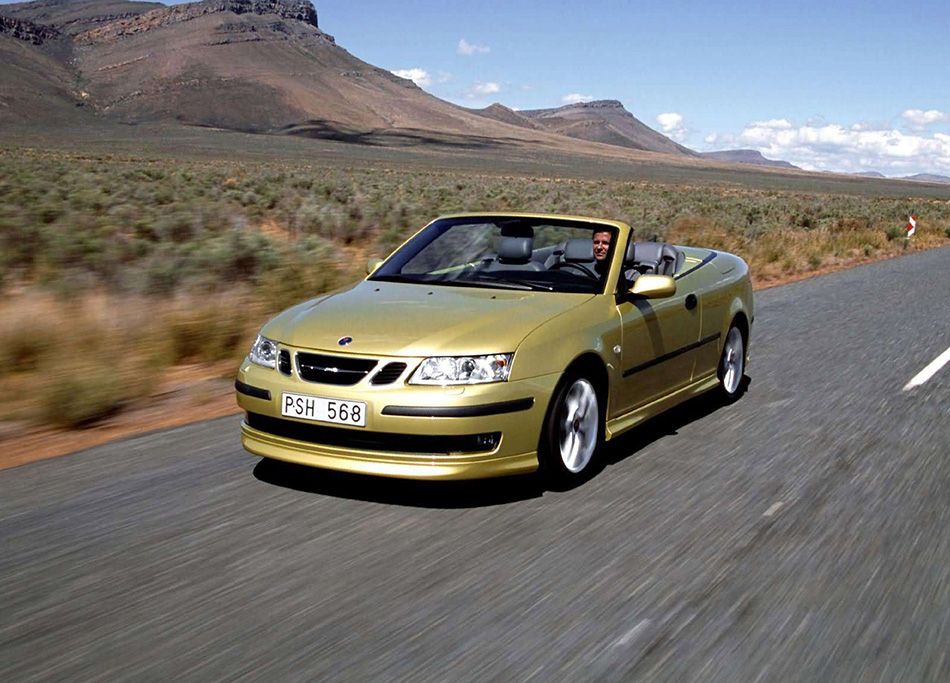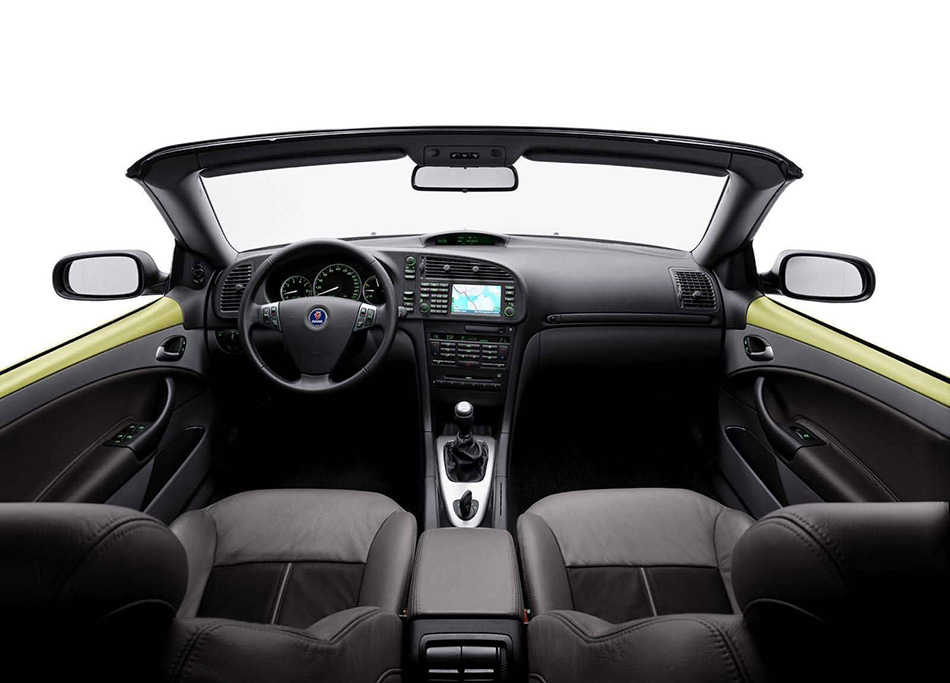Originally inspired by the U.S. market and launched in 1986, the popular Saab Convertible has proven to be a cornerstone in Saab's vehicle portfolio. The all-new 2004 Saab 9-3 Convertible is poised to reaffirm Saab as a market leader in the art of building open cars with rugged four-season, four-seater practicality. Accounting for almost one in three of all convertibles sold in Europe's premium segment last year, and one in five Saabs sold in the U.S., the Saab Convertible has become a modern classic.
Revealing the new car at the Geneva Motor Show, Peter Augustsson, Saab Automobile's President and CEO said, "In many ways, our Convertible's appeal goes right to the heart of the Saab brand. It expresses our brand pillars - design, performance, control, safety and versatility - in a focused package. It is a sporty, yet surprisingly practical car."
The new 9-3 Convertible is, without doubt, the biggest advance Saab has made in nearly 20 years of designing four-seater, four-season soft tops and is poised to re-affirm Saab's leading role in the premium convertible segment.

The all-new Saab 9-3 Convertible's innovative features develop the Saab concept that an open-top car should be "more than a convertible." In addition to its functional qualities, the new Swedish soft-top offers a greatly improved driving experience through incorporating the widely-acclaimed chassis dynamics of the new Saab 9-3 Sport Sedan. By combining its sporty and practical characteristics, it symbolizes the core appeal of the Saab brand.
Saab engineers developed the architecture for the 9-3 Convertible and Sport Sedan in parallel and were able to incorporate their demanding requirements for an open-top car from the very start. The result is a premium convertible with a level of structural integrity, build quality and running refinement that positions it at the top of its class.
Key to its enhanced abilities is a rigid body structure - almost three times stiffer than that of its predecessor - and an all-new suspension layout. These are the solid foundations on which Saab test engineers have developed the chassis poise, refinement and impressively low levels of noise, vibration and harshness that distinguish a premium-class, open-top car.
The new Convertible includes a supplementary "ring of steel" reinforcement linking the front, rear and side structures, helping to compensate for the loss of structural rigidity due to the absence of a roof and also improving ride refinement, handling and crash-impact resistance.
Compared to its predecessor, the new car gains 2.0 inches (51 mm) in overall width and 2.8 inches (71 mm) in wheelbase. Despite reduced front and rear overhangs, the overall length of 182.5 inches remains the same as the previous model.
The all-aluminum, four-cylinder 2.0-liter engine, configured for 175- or 210-hp, is 33 pounds lighter than its predecessor and is smoother, quieter and more compact. It has a four-valve cylinder head, maintenance-free chain-driven camshafts, counter-rotating balancer shafts, a dual-mass flywheel and an integrated oil cooler.
Two manual transmissions are available, depending on the engine. A five-speed manual is standard with the 175-hp 2.0t engine. A new, compact 6-speed manual gearbox, capable of handling exceptionally high torque loadings, is standard equipment on the 210-hp 2.0T variants. A new "smart" five-speed automatic transmission is optional, including Saab Sentronic, a sequential manual gear shift, adaptive to both the driver and road conditions and programmed to fully exploit Saab turbo power characteristics.
Crash impact resistance benefits from a series of new structural and occupant protection measures. Safety features for front seats include new seatbelts integrated into the seat frames, adaptive dual front airbags, two-stage side-impact airbags designed to offer protection for both the torso and the head, and Saab Active Head Restraints (SAHR), proven to be effective in helping to prevent neck injury during rear-end collisions.
Although rollovers are comparatively rare events, the consequences are quite serious and Saab has installed an active protection system in the new 9-3 Convertible. Its DynaCage concept combines pop-up rear roll bars, front seatbelt pre-tensioning and substantial reinforcement of the A-pillars to help provide an integrated protection system.

The "one-touch" soft-top operation requires no manual involvement beyond pressing a button. The roof is hydraulically-powered, with automatic self-latching to the header rail, and deploys fully in just 20 seconds while the engine is running. This is partly achieved by the Convertible's tonneau, which has a unique two-step cycle, being completely raised horizontally and then moved rearwards, parallel to the top of the trunk.
Another innovation is a more practical feature: raising the roof automatically raises the capacity of the trunk. The CargoSET (Self-Expanding Trunk) directly links the soft-top's rearmost hinge mechanism to the flexible, "accordion" storage well in the trunk. When the roof is in position, the well is fully retracted, releasing useful storage space.
The new Saab 9-3 Convertible will be built in a dedicated new production facility at Magna Steyr Fahrzeugtechnik, near Graz, Austria, and will reach the US market in the fall of 2003 as a 2004 model.
Source: Saab






















